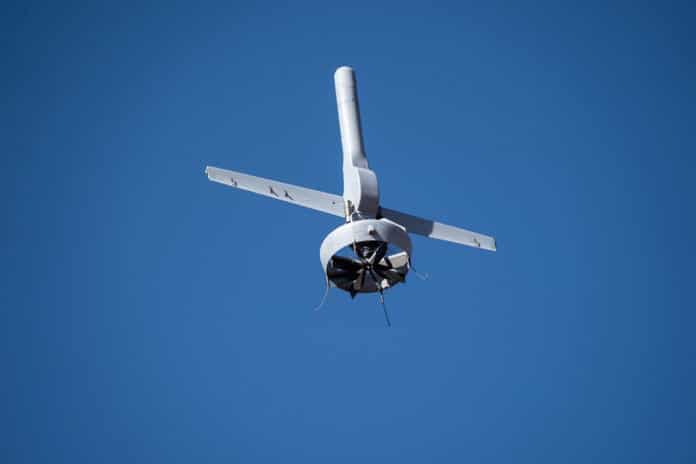Northrop Grumman Corporation and Martin UAV have completed successful flight testing of V-BAT unmanned aircraft system (UAS) with features including GPS-denied navigation and target designation capabilities.
The tests at Camp Grafton in North Dakota were carried out as part of the two companies’ offering for the U.S. Army’s Future Tactical Unmanned Aircraft System (FTUAS) program, which seeks to replace the aging Textron RQ-7B Shadow drone for Army Brigade Combat Teams, Special Forces, and Ranger battalions. For FTUAS, the U.S. Army is seeking a rapidly deployable, GPS-denied navigation-capable, expeditionary VTOL system capable of persistent aerial reconnaissance and target designation capabilities. It should also be operated with a small team in confined spaces and without the need for a runway.
The enhanced V-BAT UAS is compact, lightweight, simple to operate, and can be set up, launched, and recovered by a two-soldier team in confined environments. It weighs up to 84 lbs (38 kg), can be assembled in less than 30 minutes, and can remain in the air for 11 hours with an extra hour’s fuel reserve.
The aircraft‘s duct fan propulsion design provides for top operational safety by eliminating exposed rotors, which are commonly found in propeller-driven VTOLs. The V-BAT can also transition to fixed-wing horizontal flight. With a wingspan of 9.7 feet, the V-BAT can reach over 90 knots (167 km/h), reaching altitudes of 20,000 feet. The drone can be transported in the bed of a pick-up truck or inside a Black Hawk.
The V-BAT is also designed with sufficient payload capacity to carry a range of interchangeable payloads, including electro-optical/infra-red (EO/IR), synthetic aperture radar (SAR), and electronic warfare (E.W.) payloads, depending on mission-specific requirements. Martin UAV was recently acquired by Shield AI, which will enable rapid deployment of GPS-denied and autonomy capabilities for V-BAT through the future porting of Shield AI’s autonomy stack, Hivemind, onto V-BAT.
“The enhanced V-BAT offers a near-zero footprint, flexible vertical take-off and landing (VTOL) capability that is based on a platform deployed operationally today, to address the U.S. Army’s Future Tactical Unmanned Aircraft System (FTUAS) mission,” said Kenn Todorov, sector vice president and general manager, global sustainment and modernization, Northrop Grumman. “The team brings more than 30 years experience in the production, delivery, and sustainment of unmanned aircraft systems to support this critical mission today and into the future.”
